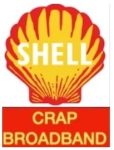
Links below are to some of the current news stories posted on our sister website royaldutchshellgroup.com covering, among other developments, an article published today by The Wall Street Journal under the headline: Corruption Currents: Nigeria to Charge Shell, Eni in Oil-Graft Scandal.
There is also news that Shell has sold a stake in a Thailand gas field and is selling more North Sea assets, all part of the fire sale necessary for funding the takeover of the BG Group. Also, some previews of Shell’s imminent fourth quarter results.
















 Anglo-Dutch oil major agrees to offload certain assets in Gulf of Mexico
Anglo-Dutch oil major agrees to offload certain assets in Gulf of Mexico


 Article by
Article by 



 Shell completes $1.7 billion sale of Nigerian assets to Aiteo
Shell completes $1.7 billion sale of Nigerian assets to Aiteo
 EBOOK TITLE: “SIR HENRI DETERDING AND THE NAZI HISTORY OF ROYAL DUTCH SHELL” – AVAILABLE ON AMAZON
EBOOK TITLE: “SIR HENRI DETERDING AND THE NAZI HISTORY OF ROYAL DUTCH SHELL” – AVAILABLE ON AMAZON EBOOK TITLE: “JOHN DONOVAN, SHELL’S NIGHTMARE: MY EPIC FEUD WITH THE UNSCRUPULOUS OIL GIANT ROYAL DUTCH SHELL” – AVAILABLE ON AMAZON.
EBOOK TITLE: “JOHN DONOVAN, SHELL’S NIGHTMARE: MY EPIC FEUD WITH THE UNSCRUPULOUS OIL GIANT ROYAL DUTCH SHELL” – AVAILABLE ON AMAZON. EBOOK TITLE: “TOXIC FACTS ABOUT SHELL REMOVED FROM WIKIPEDIA: HOW SHELL BECAME THE MOST HATED BRAND IN THE WORLD” – AVAILABLE ON AMAZON.
EBOOK TITLE: “TOXIC FACTS ABOUT SHELL REMOVED FROM WIKIPEDIA: HOW SHELL BECAME THE MOST HATED BRAND IN THE WORLD” – AVAILABLE ON AMAZON.





















